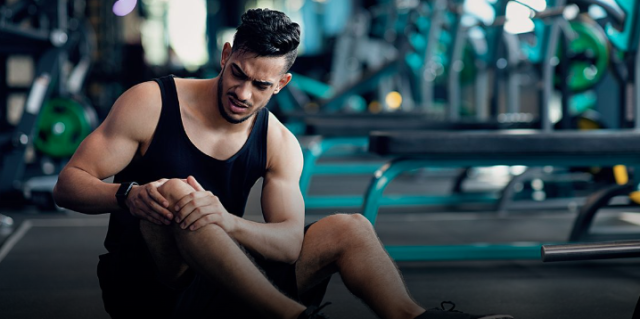Sports injury is no reason to panic

Most frequent
The most vulnerable areas for athletes, in descending order, are the knee, ankle (i.e. shins and feet), shoulders, hands, and finally the elbows. Many injuries and diseases of the musculoskeletal system directly depend on the sport: such terms as “tennis elbow”, “golfer’s elbow”, “runner’s knee” are widely known. The names speak for themselves: tennis elbow syndrome (or lateral epicondylitis) occurs due to prolonged and excessive stress on the extensor tendons of the forearm: they stretch, microcracks, inflammation occur and, as a result, sharp pains appear in the outer section of the elbow joint . With “golfer’s elbow” (or medial epicondylitis), which occurs due to prolonged excessive stress on other tendons – the flexors of the forearm, the pain is localized in the inner part of the joint. As for the “runner’s knee”, the essence of this unpleasant phenomenon is the softening and deformation of the cartilaginous tissue of the patella, which covers, like a shell, our knee in front. “Runner’s knee” occurs in athletes who like long distances or have to run for a long time on the sports ground – for example, in football players.
Another common injury is the rupture of the Achilles tendon in high jumpers and basketball players, and football players. By the way, it often breaks not only for those who jumped unsuccessfully but also for the elderly, because with age, body tissues (including tendons, and joints) wear out, which increases the risk of damage.
A bit of anatomy
As a result of sports injuries usually suffers:
- muscles
- Bundles
- Tendons
- joints
- Bones
What is the difference? Everything is very simple.
– Muscles are exactly what we pump up during strength training. A special group of organs, which consists of muscle tissue and is responsible for movement, speech, and breathing, maintains our body in an upright position. The totality of the muscles of the body is called “musculature”.
– Ligaments – special connecting elements that hold bones together, hold them in joints, prevent dislocations, and accelerate or slow down our movements. Damage to the ligaments leads to the fact that the joints “lose”. Sometimes the ligaments are simply torn, which requires their mandatory restoration.
Tendons – Contrary to popular belief, they are not the same as ligaments. If ligaments hold bones together, then tendons are needed to attach muscles to bones. They provide movement: help the joints bend and unbend.
Joints are movable joints of bones. Their surfaces are covered with special durable cartilage. Between the cartilage of the bones of the joint there is always a small gap – a cavity filled with synovial fluid, which lubricates, nourishes and moisturizes the articular cartilage.
And finally, the bones. The worst thing that can happen to them is that the bones break. Most often this happens during unsuccessful falls. The minimum damage is a crack, the maximum is an open fracture, in which the bone damages soft tissues and / or skin.
Diagnosis of injuries
What symptoms suggest an injury? Pain, swelling, redness of the damaged area, dysfunction of the muscles or ligaments. When a joint is injured, it may become deformed and start behaving unusually, for example, crunching.
If you have these symptoms, be sure to consult a traumatologist-orthopedist. In my practice, I often encounter the fact that patients do not come immediately after a sprain or rupture – if you wait with a fracture until it “heals on its own” due to severe pain, then some other sports injuries are left by their owners “for later” . As a result, nothing good happens – the joints continue to collapse, and the ligaments and tendons themselves do not grow together.
To determine the nature of the injury and its severity, the doctor may prescribe an X-ray, MRI, CT, ultrasound, and other diagnostic methods to the patient. It all depends on what kind of injury the doctor suspects.
Choice of treatments
The method of treatment is determined after the diagnosis is made. As a rule, this is an operation (ligaments and tendons are sewn together; with the help of techniques such as arthroscopy or injection therapy, destroyed joints are restored); if the bone is broken, the doctor can perform osteosynthesis – collect bone fragments using a special fixator – an implant, or simply apply plaster if it is a small crack.
Sometimes the treatment is not only surgical but also conservative – for example, “tennis elbow” is treated with an orthosis (a special fixing device) and medications that relieve pain and inflammation.
In conclusion, I want to encourage everyone: almost any sports injury can be cured, but you need to see a doctor as soon as possible. Only a doctor can make a correct diagnosis and offer the best treatment option.